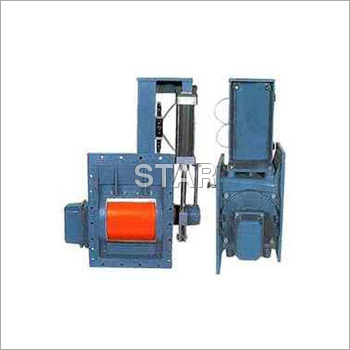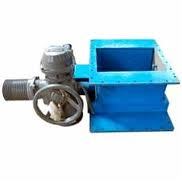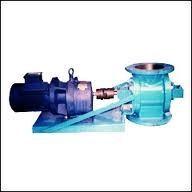Call: 08071931936

Pneumatic Rotary Gate
Product Details:
- Model No Custom/Standard Available
- Installation Guideline Mounted between hopper and conveyor/flange mounting
- Production Capacity As per Client Requirement
- Accessories Mounting Brackets, Air Regulator, Solenoid Valve
- Source Compressed Air
- Speed Variable as per Pneumatic Control
- Driven Type Pneumatic
- Click to View more
X
Pneumatic Rotary Gate Price And Quantity
Pneumatic Rotary Gate Product Specifications
- As per Client Requirement
- Mounting Brackets, Air Regulator, Solenoid Valve
- Powder Coated / Painted
- Pneumatic Rotary Gate
- Industrial Gate Valve
- Mounted between hopper and conveyor/flange mounting
- Customized As Per Requirement
- Custom/Standard Available
- Up to 500 kg/h (Depending on Model)
- Used for controlling material flow in hoppers, silos, bins and conveyors
- Not Required (Pneumatic Operation)
- Pneumatic
- Pneumatic Control System
- Pneumatic Actuator
- Above 95%
- Variable as per Pneumatic Control
- No
- Grey/Silver
- Mild Steel (MS)
- Nil (Pneumatically Operated)
- Compressed Air
- Smooth Rotary Movement, Leak Proof, Easy to Install, Corrosion Resistant
Product Description
We are an unparalleled name in presenting premium quality Pneumatic Rotary Gate to our clients. It is used to control the flow of bulk materials like cement, gypsum, lime and fly ash from conveyors. With the help of cutting-edge technology, this rotary gate is manufactured under the stern guidance of our dexterous professionals. This rotary gate is available up to conveying capacity of 1000 TPH to our clients. Apart from that, this Pneumatic Rotary Gate goes through on certain parameters to ensure its performance and longer working life.
Features:
-
Operational fluency
-
Easy maintenance
-
Excellent performance
-
Power efficient
Efficient Pneumatic Control System
Harnessing compressed air as its driving force, the Pneumatic Rotary Gate eliminates the need for electrical power, ensuring safe operation even in explosive or dusty environments. The pneumatic actuator allows for variable speed control and enables seamless process automation in industrial material handling.
Robust Construction and Durability
Built from powder-coated or painted mild steel, this gate valve resists corrosion and daily wear, ensuring long-term reliability. Customized body thickness, high-quality seals (Nitrile Rubber or Teflon), and compressed fiber gaskets further guarantee leak-proof sealing and efficient performance.
Adaptable Installation and Maintenance
Designed for flange-type mounting, the gate is easy to install between hoppers and conveyors, with options for custom dimensions to suit specific site needs. Accessories like mounting brackets, air regulators, and solenoid valves streamline setup, while its leak-proof construction simplifies ongoingmaintenance.
FAQs of Pneumatic Rotary Gate:
Q: How is the Pneumatic Rotary Gate installed in an industrial setting?
A: The gate is typically flange-mounted between hoppers and conveyors using provided mounting brackets. Installation guidelines ensure secure alignment and easy integration into existing material flow systems.Q: What materials are available for the gates seal and gasket?
A: Seal materials can be specified as Nitrile Rubber or Teflon depending on the applications chemical suitability. Gaskets are made from compressed fiber or tailored to match process requirements, ensuring optimal leak-proof performance.Q: When should I choose a pneumatic rotary gate over an electrically operated valve?
A: A pneumatic rotary gate is ideal when electrical power is limited or undesirable due to fire or explosion risk. It operates reliably on compressed air, offering energy savings and enhanced safety in harsh process environments.Q: Where can this valve be used in material handling systems?
A: The gate is suited for controlling flow in hoppers, bins, silos, and conveyorscommon in industries such as food processing, chemicals, or pharmaceuticals where dust-tight and efficient material containment is essential.Q: What is the process for controlling the gates rotary movement?
A: The pneumatic actuator drives the gate, enabling smooth rotary movement between fully open (90) and fully closed (0) positions. Operators can adjust the speed and angle via the pneumatic control system for precise material flow.Q: What benefits does the gate offer concerning safety and noise levels?
A: Safety features include lockable positions and emergency stop provisions. The gates operation produces noise levels below 60 dB, contributing to a safer and quieter workplace.Q: How does the leak-proof design improve process efficiency?
A: High-quality seals and gaskets prevent material leakage and contamination, improving handling accuracy and maintaining efficiency ratings above 95%, while also reducing maintenance downtime.Tell us about your requirement

Price:
Quantity
Select Unit
- 50
- 100
- 200
- 250
- 500
- 1000+
Additional detail
Mobile number
Email

 Send Inquiry
Send Inquiry


